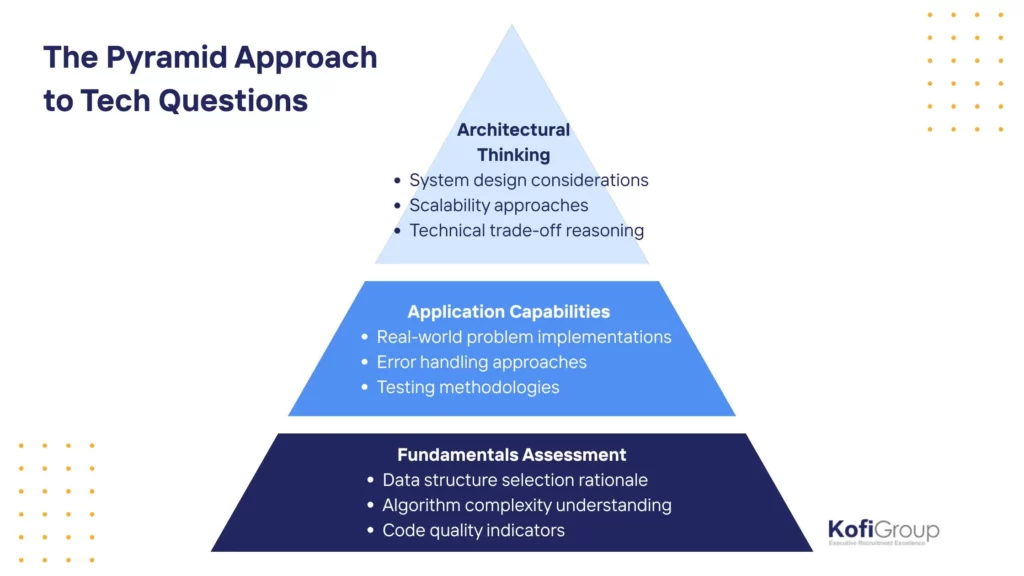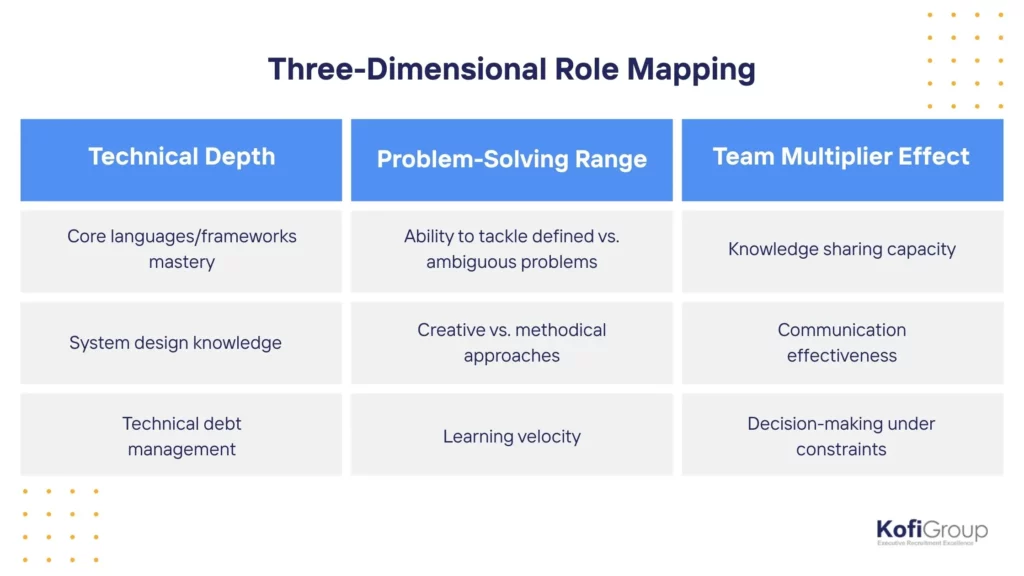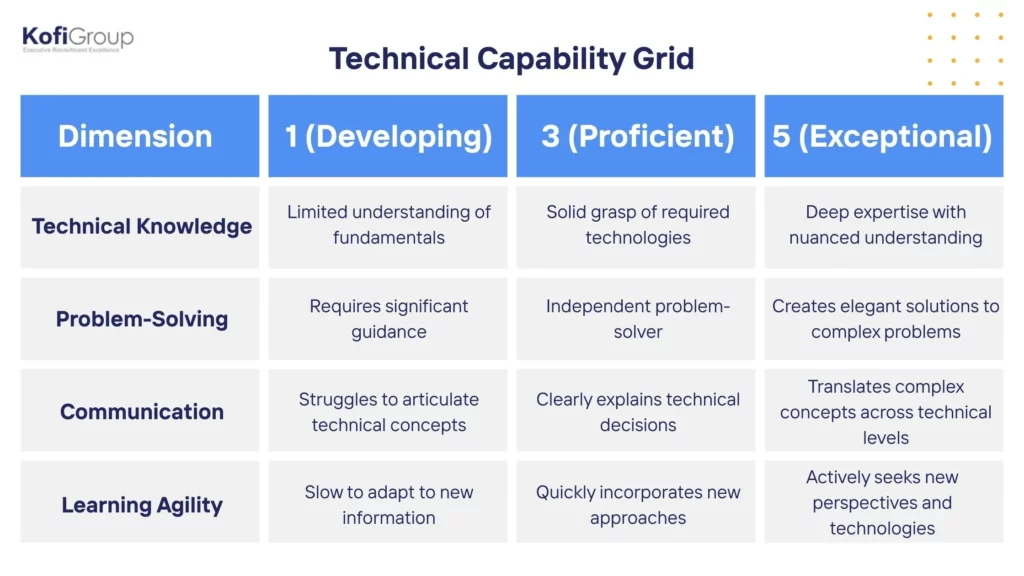For startup founders and hiring teams, technical interviews are more than just a hiring step. They are a turning point.. Every early engineering hire carries major weight, shaping everything from product velocity to team culture. That’s why learning how to prepare for technical interviews is critical if you want to build a strong, reliable tech team from the start.
Startup Genome points out that hiring technical talent continues to be one of the biggest challenges for startups. In fact, since 2019, it’s only gotten tougher across most ecosystems. Why? The demand for experienced engineers keeps climbing, while the supply just isn’t keeping up because of the pace of digital transformation and a persistent shortage of skilled developers and engineers.
This guide is here to help you build a technical interview process that goes deeper than surface-level coding tests. We’ll cover how to prepare for technical interviews that assess more than just syntax recall. Think real-world problem-solving, adaptability, and team fit. When you’re growing a startup, it’s not just about finding someone who can write code; it’s about finding someone who can build with you.
Pre-Interview Planning: Laying the Groundwork
Before you even start scheduling candidates, it’s important to nail down your technical hiring criteria. This will help ensure you’re aligning your interview process with your product goals and team needs. Here’s how to do it:
Define Your Technical North Star
Start by establishing a clear vision of what you need from your technical hires. This will serve as your “North Star” throughout the hiring process. Make sure your criteria are aligned with your product roadmap, so every hire supports your company’s long-term vision.
Build Your Technical Competency Matrix:
- Must-have technical skills (cannot compromise)
- Growth-oriented capabilities (can develop with mentorship)
- Technical adaptability indicators (signals they can evolve with your stack)
- Collaborative engineering markers (how they’ll function in your team)
Three-Dimensional Role Mapping
Create a visual map of what success looks like for the role, considering three key areas:
Interview Flow Architecture
Next, design your technical interview sequence to move from simple checks to more in-depth evaluations. Here’s an ideal structure:
1. Technical Screen (30 min)
- Verify basic qualifications
- Check for cultural alignment
- Get a sense of their problem-solving approach
2. Core Technical Assessment (60-90 min)
- Hands-on coding challenges
- Discuss their system understanding
- Evaluate how they communicate complex technical ideas
3. Architectural Thinking (For mid/senior roles)
- System design exercises
- Assess their ability to analyze trade-offs and justify technical decisions
4. Team Compatibility Circuit (45-60 min)
- Paired programming session
- Test cross-functional communication
- Check for alignment with your company’s values and team culture
Crafting the Right Questions for Tech Interviews
When you’re preparing for a technical interview, one of the most important things to get right is your set of questions. You want to make sure your questions dig into the right areas while keeping the flow natural. Here’s a simple framework to help you craft the best tech interview questions.
The Pyramid Approach to Tech Questions
Think of your technical questions like a pyramid. You’ll start with the basics, then move into real-world applications, and finally, assess how candidates think at an architectural level.

Ask questions that check their understanding of core concepts. Think data structures, algorithms, and how they write clean code.
- “What factors would lead you to pick a specific data structure when solving a problem?”
- “Can you explain the time complexity of this algorithm?”
- “What do you look for to ensure code quality?”
2. Middle Layer: Application Capabilities
Now, dive into how they apply their knowledge to real-world problems. This is where you can see if they can handle challenges that actually come up in your codebase.
- “Can you share an experience where you had to deliver a technical solution quickly due to time pressure?”
- “How do you approach error handling in production?”
- “What testing methods do you use in your day-to-day coding?”
3. Top Layer: Architectural Thinking
For senior roles, this is the big picture. You want to know if they can design systems and make technical decisions with scalability in mind.
- “Walk me through how you’d build a system that can scale to support millions of users.”
- “What trade-offs would you consider when designing a new feature?”
- “How do you ensure your system can scale efficiently?”
Building Your Question Bank
To make sure your interviews stay consistent and cover all the bases, build a question bank around three key areas:
1. Technical Depth Probes
- “How would you implement a custom caching mechanism for our user authentication flow?”
- “Walk me through refactoring this code to improve its performance.”
2. Problem-Solving Reveals
- “Here’s a simplified version of a challenge we faced last month. How would you approach it?”
- “This function is breaking in production. How would you debug it?”
3. Learning Velocity Indicators
- “Tell me about the last technology you had to learn quickly. How did you approach it?”
- “If we needed to implement [relevant tech] next week, how would you get up to speed?”
Interview Execution: Setting the Stage for Success
When you’re preparing for technical interviews, it’s crucial to create an environment where candidates can really show what they’re made of. That means setting clear expectations from the get-go. Here’s how you can execute a more authentic, insightful interview process.
Setting the Stage for Authentic Performance
Start by setting the right tone at the beginning of the interview:
- Transparent agenda: Let the candidate know exactly what to expect.
- Expectation setting: Outline how the interview will go, including what they’re being evaluated on and the type of questions they’ll face.
- Encourage thinking aloud: This is key! You want to hear their thought process as they solve problems.
- Establish a collaborative framework: Position the interview as a two-way conversation, not just an interrogation.
The Behavioral Foundation (15 minutes)
You don’t just want to know how they code. You also need insight into their decision-making and teamwork. Start with behavioral questions that show how they think about technical challenges:
- “Can you talk about a technical choice you made that didn’t work out as planned and what you learned from it?”
- “Have you ever had to adjust your technical approach to meet business needs or limitations? What did that look like?”
- “How did you handle a disagreement about a technical approach with teammates?”
Practical Technical Assessment Approaches
Now, dive into the technical side. The goal is to see how candidates approach real-world problems, not just abstract theory.
Live Coding with Context
Instead of throwing out generic algorithmic challenges, put them in a scenario that mirrors your real-world problems:
“Our user analytics dashboard is loading slowly. Here’s a simplified version of the data processing function. Let’s optimize it together.”
Incremental Complexity Scaling
Start with a manageable challenge, and as they solve it, increase the difficulty. This will help you see how they handle more complex problems while adjusting to the challenge.
Collaborative Problem-Solving
Shift the technical interview from a solo test to more of a pair programming session. This approach helps you assess how they work with others and handle feedback:
- Offer hints when necessary.
- Discuss trade-offs in their solution.
- Explore alternative approaches together.
Real-Time Evaluation Techniques
As the interview unfolds, use these frameworks to assess the candidate’s performance in real-time:
The 5-Dimension Assessment Matrix
For each tech challenge, keep track of:
- How quickly they grasp the problem.
- The solution approach they choose.
- The quality of their implementation.
- How well they adapt to your feedback.
- How clearly they communicate their thinking.
Red Flag Detection System
Watch for any red flags during the interview:
- Resistance to feedback: A candidate who can’t take constructive criticism might not be open to learning.
- Inability to explain technical decisions: If they can’t clearly articulate why they made certain decisions, that’s a concern.
- Overengineering simple solutions: Sometimes, simple solutions are the best. Overcomplicating things can signal a lack of practical judgment.
- Communication breakdowns under pressure: Technical skills are great, but they need to be able to communicate effectively when things get tense.
Evaluation Framework: Making the Right Call
When you’re preparing for a technical interview, it’s important to have a clear and consistent way to evaluate candidates. This helps ensure you’re not just guessing who fits, but making informed decisions based on a standardized system.
Standardized Scoring System
To keep things fair and ensure everyone’s on the same page, set up a scoring framework that all interviewers can use. Here’s how you can break it down:
Technical Capability Grid
For each candidate, rate them on a scale from 1 to 5 across key dimensions:
This system lets you objectively compare candidates’ abilities and make sure you’re bringing in the right fit.
Cross-Functional Evaluation Integration
For critical technical hires, get input from more than just the engineering team. Pull in feedback from:
- Product management
- Design team
- Customer success
- Executive leadership
This helps you ensure that the candidate’s technical skills are aligned with your company’s broader goals. It’s not just about how well they code—it’s about how they fit into the bigger picture.
Decision-Making Framework
When it’s time to make a decision, use this rubric to ensure you’re making a well-rounded choice:
1. Must-Have Threshold:
- Meets the minimum technical bar across all dimensions
- No major red flags in core competencies
- Cultural alignment is clear
2. Comparative Excellence Factors:
- Stands out in key areas (e.g., problem-solving, communication)
- Shows strong growth potential
- Complements the existing team dynamics
Post-Interview Analysis: Getting the Full Picture
After the interview wraps up, it’s crucial to take a step back and analyze everything. Here’s how to make sure you’re capturing the right insights and setting up your team for the best hiring decisions.
Immediate Capture Protocol
Right after each interview, jot down your thoughts while everything’s still fresh:
- Document specific observations with examples: Note any standout moments that highlight the candidate’s skills or areas where they struggled.
- Complete a standardized evaluation form: Fill this out to keep things consistent across all interviews.
- Record your “gut feeling” separately: This helps to differentiate between objective assessments and your personal biases.
- Note potential team fit considerations: Think about how they’ll mesh with the team, both technically and culturally.
Collaborative Decision-Making Process
When it comes time to discuss your hiring decision, structure the conversation to avoid bias and make sure everyone’s on the same page:
- Round-robin initial assessments: Have each interviewer share their thoughts one by one to avoid anchoring bias (where one person’s opinion dominates the conversation).
- Evidence-based discussion: Focus on what you saw in the interview, using concrete examples to back up opinions.
- Growth potential vs. immediate needs: Weigh whether the candidate’s potential for growth outweighs the need for someone who can jump in and contribute right away.
- Clear articulation of concerns: Make sure any reservations or doubts are addressed openly so they don’t get overlooked.
Continuous Improvement Loop
To refine your process and make each interview better, track a few key metrics:
- Technical hire performance at 30/60/90 days: This will help you understand how well your candidates actually perform once they’re onboard.
- False positive/negative rate analysis: Track whether you’ve been hiring candidates who seemed great but didn’t work out, or if you missed out on strong candidates.
- Candidate experience feedback: Get input from the candidates on how they felt about the interview process to improve their experience.
- Time-to-productivity correlation with interview performance: Measure how quickly new hires get up to speed and whether their interview performance was a good predictor of this.
The Remote Tech Interview: How to Optimize for Virtual Assessments
With more teams going remote, the way you conduct technical interviews has to evolve. Here’s how to set up and run a smooth, effective virtual tech interview.
Virtual Technical Assessment Optimization
Remote interviews bring their own set of challenges. To make sure you get the best out of your candidates, you’ll need to adjust your process a bit.
Technical Environment Setup
To avoid any tech headaches during the interview, set up everything beforehand:
- Use collaborative coding platforms like CoderPad, CodeSandbox, or Replit to let candidates code in real-time.
- Establish backup communication channels in case your primary platform has issues (think Slack or Zoom).
- Test all technical platforms before the interview to ensure everything works smoothly.
Virtual Signal Amplification
In remote settings, it’s important to be extra clear and supportive:
- Explicit communication about the process: Make sure the candidate knows exactly what’s coming up and how they’ll be assessed.
- Encourage thinking aloud: Ask them to talk through their thought process so you can gauge their problem-solving and technical abilities.
- Clear framework for asking questions: Set expectations for when they can ask questions and how to handle them.
- Structured time management: Keep the interview moving at a steady pace so that you can cover all the essential areas.
Distributed Team Simulation
You want the interview to feel as close to working with your team remotely as possible. Here’s how:
- Asynchronous communication components: Give candidates time to review documentation or problem statements in their own time.
- Documentation clarity: Assess how well candidates can understand and work with remote docs (this is crucial for distributed teams).
- Remote collaboration evaluation: Simulate how they’d collaborate with remote teammates, paying attention to communication and teamwork.
Tech Interview Toolkit
Using the right tools can make all the difference. Here’s your go-to toolkit for remote tech interviews:
Essential Resource Library
- Technical Assessment Platforms:
- HackerRank for Startups
- CoderPad Teams
- GitHub Codespaces
- Interview Structure Templates:
- Role-specific interview flows to tailor each interview to the job
- Question banks by competency area to target key skills
- Evaluation rubrics by experience level for consistent scoring
- Candidate Experience Enhancers:
- Pre-interview info packets so candidates know what to expect
- Technical environment setup guides to help candidates prep
- Post-interview feedback mechanisms to continuously improve
Team Interviewer Training
To make sure your team is on point, train them on:
- Bias recognition and mitigation: Ensure everyone is aware of potential biases and how to avoid them.
- Active listening and questioning frameworks: Teach your team how to ask great questions and really listen to the answers.
- Technical evaluation calibration: Ensure everyone evaluates candidates with the same criteria for consistency.
- Candidate experience best practices: Help your team deliver a great interview experience, from prep to feedback.
For More Insights:
Conducting Interviews: A Guide for Employers
Conclusion: Making Technical Interviews Work for You
By using this approach to technical interviews, your startup can build a hiring process that does more than just find top talent. It shows off your engineering culture and turns your interview process into a competitive advantage.
Keep in mind that how you prepare for technical interviews today will shape your product’s success tomorrow. A solid interview process doesn’t just help you identify great engineers; it also attracts them to your mission and sets them up for success from the get-go. So, take the time to make your technical interview process something that works for both your team and your candidates.



